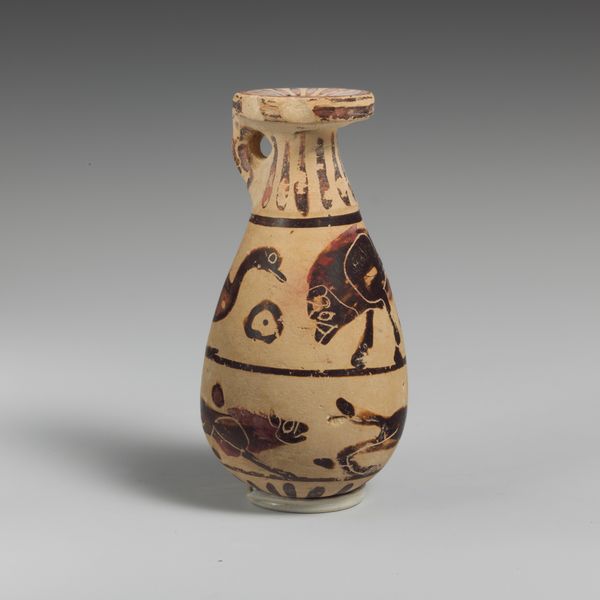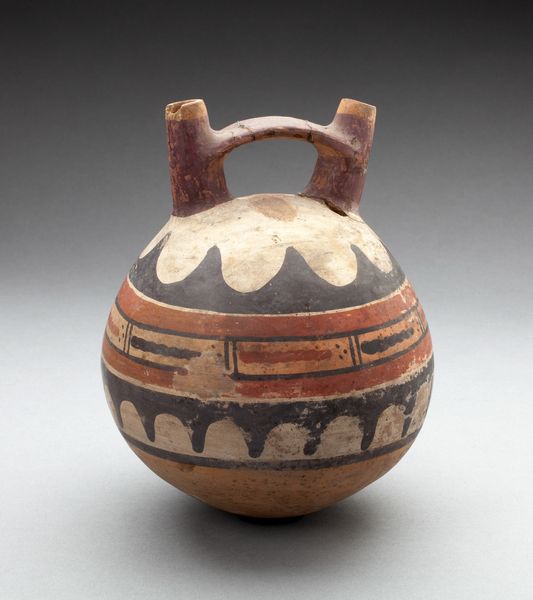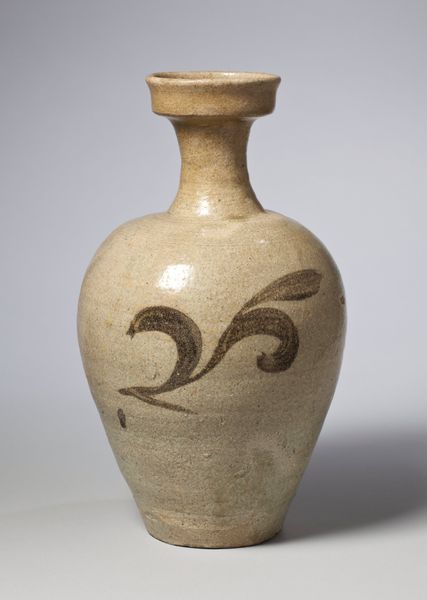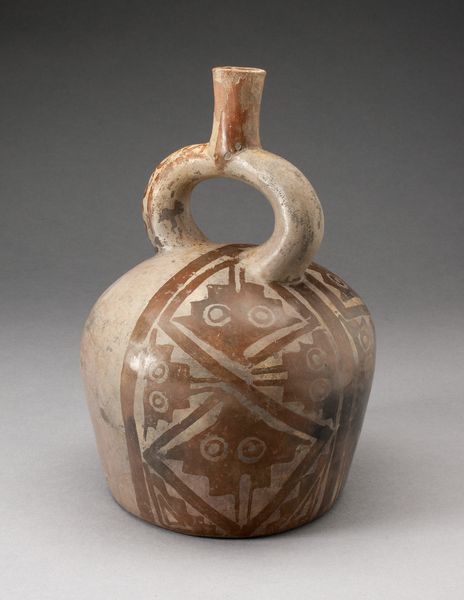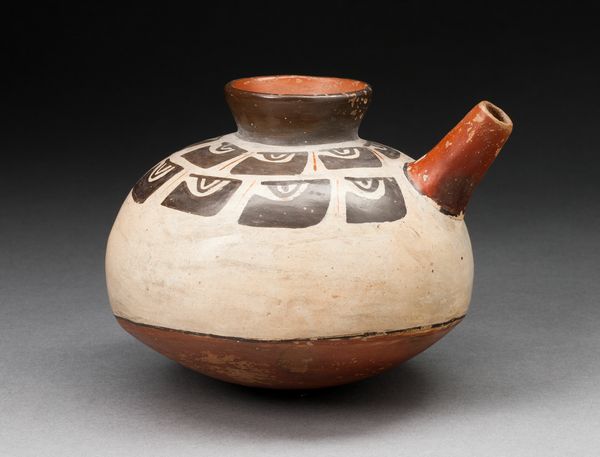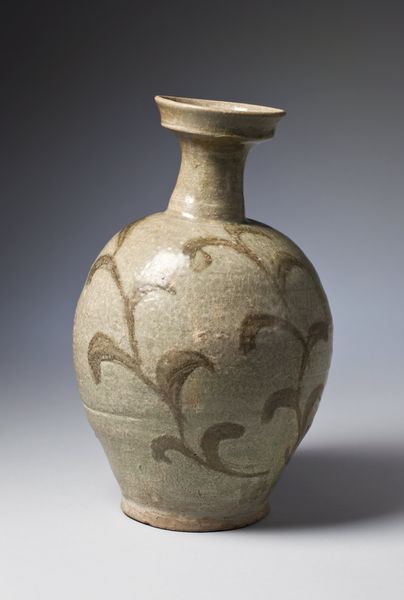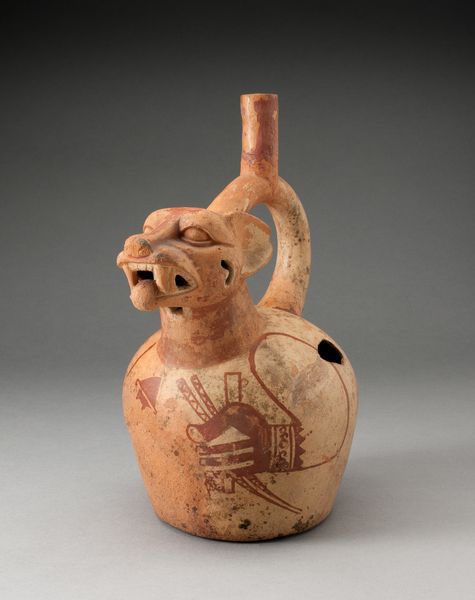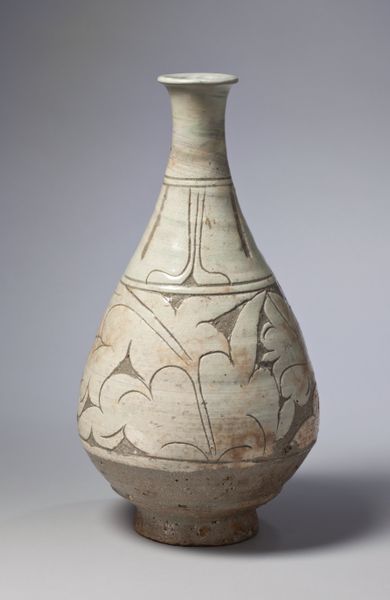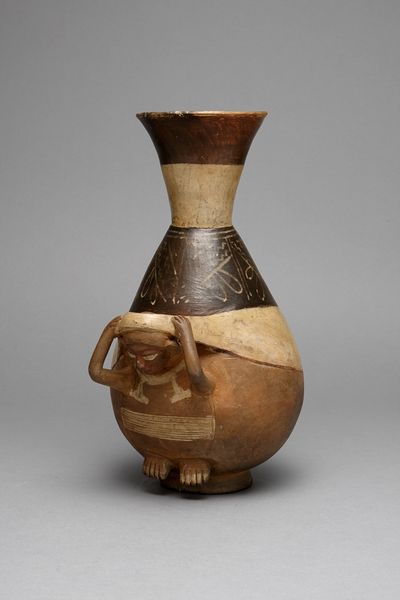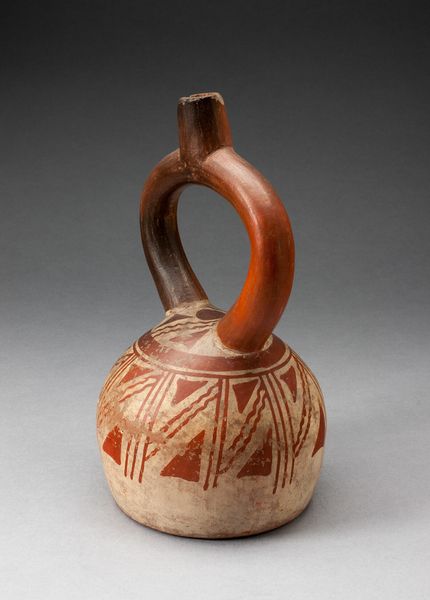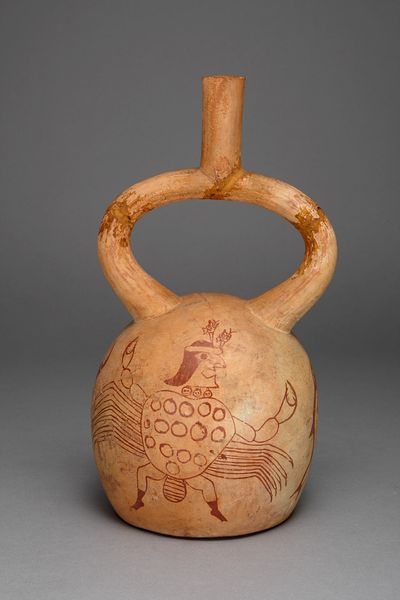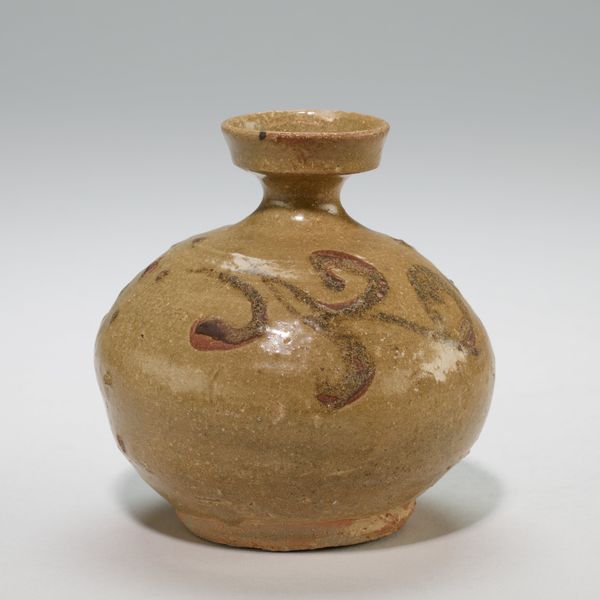
ceramic, earthenware
#
ceramic
#
vase
#
figuration
#
earthenware
#
ancient-mediterranean
#
orientalism
#
ceramic
Dimensions: 11 1/4 × 6 1/2 × 6 9/16 in. (28.58 × 16.51 × 16.67 cm)
Copyright: Public Domain
This bottle with floral design was made anonymously, using earthenware. The form and decoration, while simple, speak volumes about the cultural values of its time. Imagine the potter, working within a specific workshop tradition, where the act of creation was as much about utility as it was about aesthetics. This vessel reflects a society deeply connected to nature, where floral motifs symbolized growth, renewal, and the cyclical rhythms of life. Consider the social conditions that shaped this artistic production. Was it commissioned for a wealthy patron, or crafted for everyday use by common folk? The answer to this question illuminates the role of art in different social strata and the ways in which cultural values were disseminated. We might delve into historical records, workshop inventories, and trade routes to understand the context of its creation. By examining such objects, we gain insight into the daily lives, beliefs, and artistic practices of those who came before us.
Comments
minneapolisinstituteofart almost 2 years ago
⋮
This Buncheong bottle features a painterly design of peony leaves brushed onto the clay in iron-brown pigment, a style associated with the kilns of sacred Mount Gyeryong near Hakbong-ri, west of the city of Daejeon. When the early rulers of the Yi dynasty rejected Buddhism in favor of Confucianism, many Buddhist monks were forced to return to secular life. These former monks of Gyeryong set up kilns and began to produce Buncheong, which they decorated rapidly with simple designs in iron oxide over a cream-colored background. Such wares were greatly admired for their freshness and spontaneity. Iron-painted Buncheong was only produced for a short period of time in Hakbong-ri, just a few decades from the end of the 1400s into the early 1500s. Thereafter, the Hakbong-ri kilns began producing porcelain exclusively.
Join the conversation
Join millions of artists and users on Artera today and experience the ultimate creative platform.
